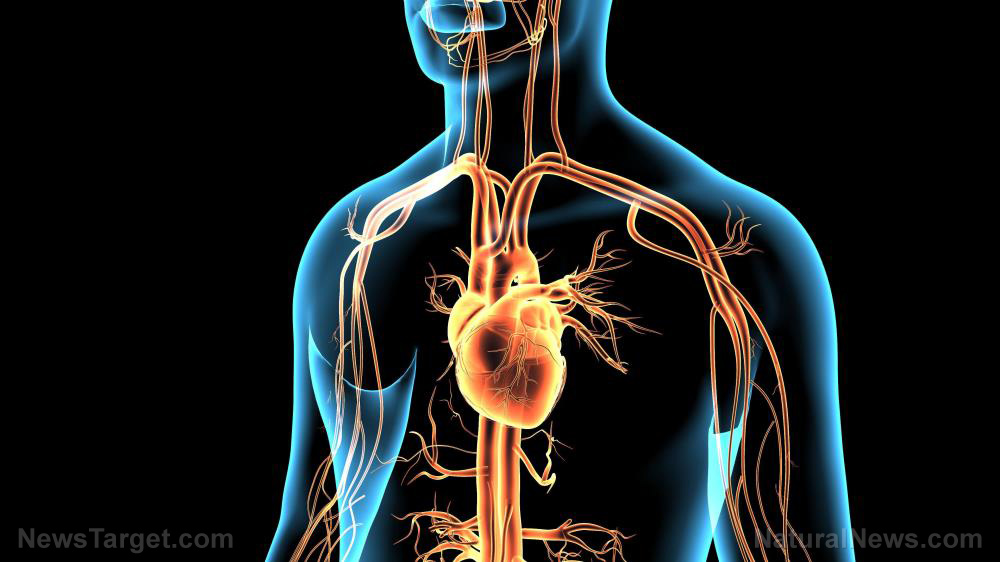Plaque and heart health: What is SR-B1 and how does it cause “bad” cholesterol to enter artery walls?
11/11/2019 / By Evangelyn Rodriguez

Low-density lipoproteins (LDL) are commonly associated with heart disease. Inside the body, LDL serves as a carrier or transporter of cholesterol to and from cells. LDL is more commonly known as “bad” cholesterol due to the considerable role it plays in the buildup of plaque in the arteries. Plaque buildup eventually leads to atherosclerosis, a serious condition that underlies life-threatening events such as heart attack or stroke.
In a recent study published in the journal Nature, researchers from the University of Texas (UT) Southwestern Medical Center and New York University School of Medicine discovered how LDL circulating in the blood makes its way to arterial walls. They found that an endothelial cell membrane receptor protein called scavenger receptor class B type 1 (SR-B1) is responsible for bringing LDL to the arteries – promoting its accumulation, which eventually results in atherosclerosis.
Atherosclerosis and cardiovascular disease
Atherosclerosis can be loosely defined as the narrowing of the arteries due to the formation of plaque. When substances that can be found in the blood, such as fat, cholesterol, white blood cells, and calcium, accumulate in one area, they can develop into plaque, which hardens over time and narrows the arteries. Arterial plaque buildup not only reduces blood flow to important organs like the brain, but it also contributes to blood clot formation, the main cause of heart attack and stroke.
LDL is said to be heavily involved in plaque formation. Its passage into the arterial wall triggers a response from the immune system, which sends macrophages — immune cells that destroy aberrant cells and pathogens — to engulf it. However, LDL eventually accumulates inside these macrophages, forming fat-laden cells with a foamy appearance. These foam cells comprise the fatty streaks found in plaques that cause arterial walls to degenerate. Foam cells also promote inflammation, the development of lesions, and further buildup of atherosclerotic plaques.

Cardiovascular disease (CVD) is the leading cause of death around the world. According to the World Health Organization (WHO), more people die from CVD every year than from any other cause. CVD is the umbrella term for a group of disorders that affect the heart and blood vessels. These disorders include coronary heart disease, cerebrovascular disease, peripheral arterial disease, rheumatic heart disease, congenital heart disease, deep vein thrombosis, and pulmonary embolism. While risk factors for these diseases are varied but controllable, atherosclerosis still remains the dominant cause of CVD. (Related: The Right Diet can Reverse Hardening of the Arteries.)
How the protein SR-B1 promotes atherosclerosis
For their study, the researchers used mice with elevated blood cholesterol levels to determine how LDL ends up in the arteries. They found that deleting SR-B1 from endothelial cells reduces the amount of LDL that could reach the arterial walls. It also decreases the number of foam cells that form and the size of atherosclerotic plaques that build up in the mice’s arteries. The researchers also reported that LDL is colocalized with SR-B1 in vivo; its binding to SR-B1 is crucial for its transcellular transport across endothelial monolayers.
Besides SR-B1, another protein called dedicator of cytokinesis 4 (DOCK4) is also involved in LDL transport. The researchers found that prior to the formation of plaques and lesions, both SR-B1 and DOCK4 are highly expressed in regions of the mouse aorta — the main artery that carries blood away from the heart — that are prone to atherosclerosis. They observed the same thing in human atherosclerotic arteries when compared with normal arteries.
According to Philip Shaul, one of the authors of the study, this indicates that the presence of SR-B1 and DOCK4 in particular sites is associated with atherosclerotic lesions.
“At the start of this work it was surprisingly unknown how LDL enters the artery wall to cause cardiovascular disease,” he said. “The paper’s findings solve that mystery and counter many scientists’ prior assumption that LDL simply enters through sites of damage or disruption in the single layer of endothelial cells that serves as the artery wall’s protective barrier.”
Shaul and his colleagues also concluded in their article that inhibiting the endothelial delivery of LDL into the walls of the arteries can be a promising new strategy for the prevention of CVD.
“If you could develop a drug that inhibits SR-B1 or DOCK4, or a gene therapy that silences them in endothelial cells, you could potentially decrease atherosclerosis and, hence, reduce the incidence of coronary artery disease, heart attack, and stroke,” Shaul explained.
“Such strategies would complement current treatments that lower circulating LDL and be particularly valuable in situations in which LDL lowering is challenging.”
Sources include:
Submit a correction >>
Tagged Under:
arteries, atherosclerosis, bad cholesterol, blood clot, cardiovascular disease, discoveries, foam cells, heart attack, heart disease, heart health, inflammation, LDL, low-density lipoproteins, research, stroke
This article may contain statements that reflect the opinion of the author





















